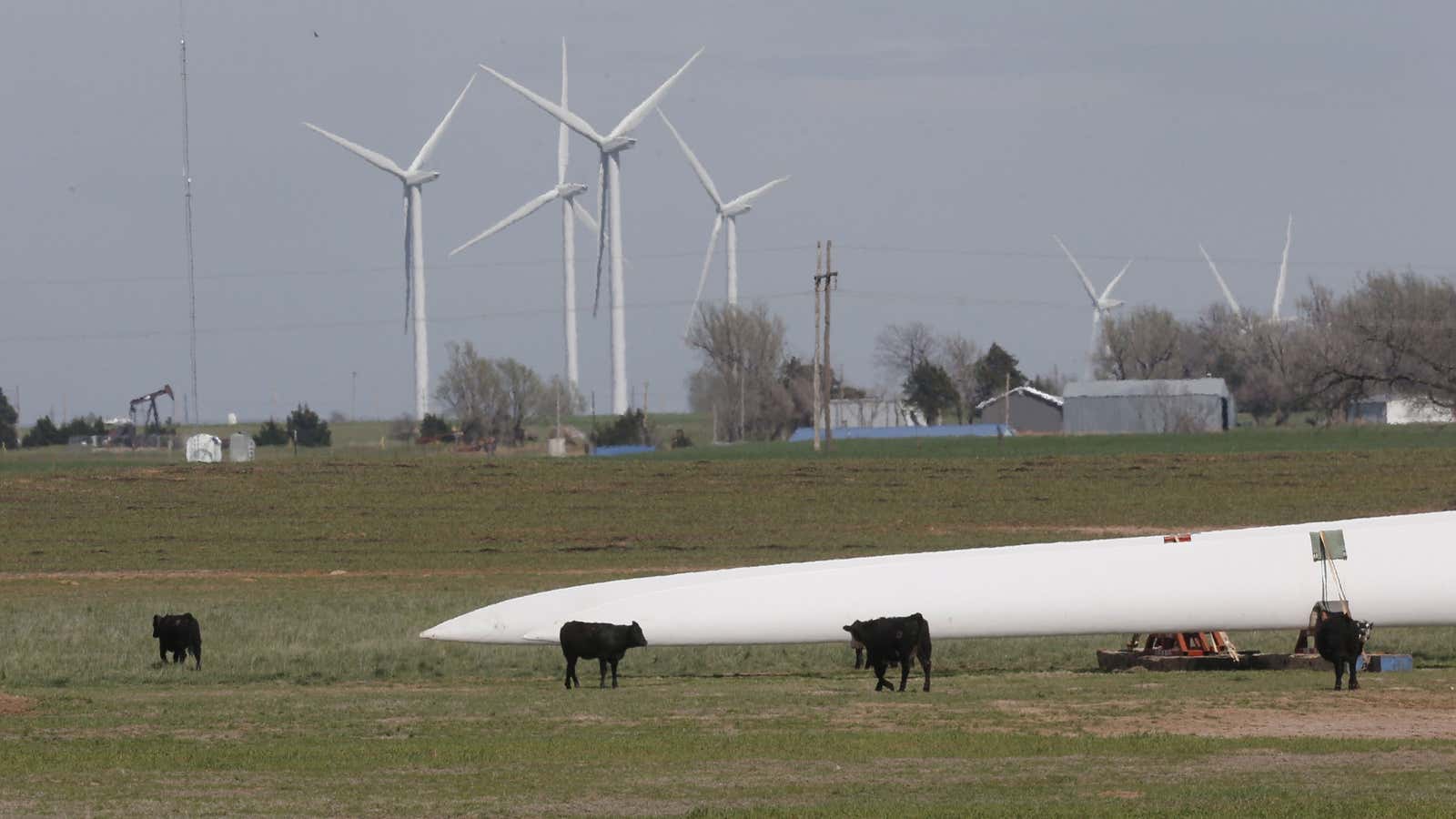You probably won’t be receiving a utility bill from Google anytime soon, but the search giant is slowly but surely morphing into a literal power broker. Yesterday (Sept. 17), for instance, Google announced that it would buy all the electricity generated by the 240-megawatt Happy Hereford wind farm to be built near Amarillo, Texas.
Google’s main goal is to make itself greener. Google Energy, the company’s power subsidiary, which has a US government license to buy and sell energy like any utility, will sell the electricity from Happy Hereford into the wholesale market in Oklahoma where one of Google’s massive data centers is located. The data center can’t take the power directly from Happy Hereford; it buys electricity from its local utility, which may buy it from the wholesale market. But by selling green power to the grid, Google gets to deduct emissions from its carbon footprint as if it had used the renewable energy itself.
However, in doing so, it is also slowly starting to up-end the traditional utility business. Most utilities either build power plants themselves or negotiate long-term power-purchase agreements with independent electricity producers that must then be approved by state regulators. Chermac Energy, the Native-American-owned company that owns Happy Hereford, was able to bypass that bureaucracy by selling directly to Google Energy. The electricity will still be available to local utilities on the wholesale market, but not under those predictable and often lower rates negotiated in power-purchase agreements. If Google Energy starts to become a major buyer in a market, the utilities might have to start offering power producers higher prices in order to compete with it.
That assumes, of course, that Google Energy will keep paying a premium for green energy as it has in the past. Google spokeswoman Kate Hurowitz told Quartz the company would not disclose the financial terms of the Happy Hereford deal. She said in an e-mail that the power purchase agreements are a “a means to an end” of promoting renewable energy and powering the company’s operations with carbon-free electricity. Google, she noted, has no designs on becoming a quasi-utility.
Maybe not. But the nation’s utility executives probably are not feeling lucky these days. They are already fretting about losing revenue as a growing number of homeowners install solar panels to power their abodes with free sunshine. With the Happy Hereford wind farm, which is expected to go online in late 2014, Google will have power-purchase agreements for more than 570 megawatts of wind energy. It has also invested directly in renewable energy projects, such as the $168 million it put into the 370-megawatt Ivanpah solar thermal power plant nearing completion in the southern California desert. These are still small amounts, but it may be only a matter of time before Google becomes a force in the power markets, whether it intends to or not.
